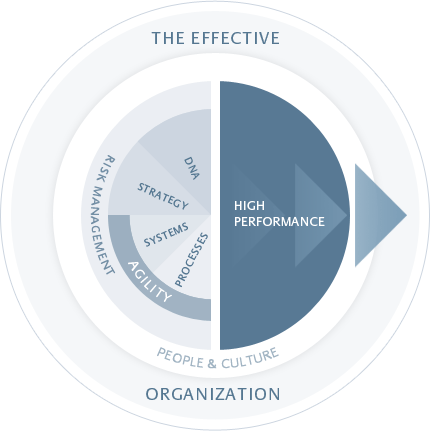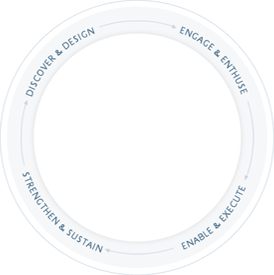Turning brilliant Strategic Thinking
effectively into brilliant Results.
Strategy
Most organizations have a strategy. Many leaders would probably argue they have ‘a brilliant strategy’. Research however shows that if employees are asked if they can state what their organization's strategy is, typically less than 50% of them can give an answer that is in line with that of their senior leaders. Research also shows that only about one third of the people asked believe that their organization is ‘very good’ or ‘excellent’ at strategy execution. At the end of the day, an organization is not judged by its strategy but by its results. So, it looks like many organizations have an issue: They have a 'brilliant' strategy, yet it doesn't deliver brilliant results! The conclusion is simple: either the strategy is not really all that brilliant, or if it is, it is not well deployed or not well implemented. It is as simple as that.
Our experience shows that most organizations don’t need anyone to tell them what their strategy should be, nor do they need over-complicated strategic concepts or long lists of new strategic projects. What is often appreciated though is a facilitated, disciplined process to help:
- draw out and organize what they already know about their business;
- transform this knowledge into clear and communicable strategic goals, objectives and targets;
- cascade and refine these strategic goals, objectives and targets for each level or area in the organization and align them with individual and team objectives and targets;
- decide and plan how to accomplish the strategic goals and objectives (through programs, projects and actions. This sometimes also includes making tough decisions about what NOT to do, or not do to NOW);
- achieve goals, objectives and targets through fast and effective execution of agreed plans;
- track progress and take corrective action if and when required.
We work with our clients to help them turn brilliant strategic thinking effectively into brilliant results. We do this by providing process, methodology, facilitation, challenge, and, if required, imposing discipline for:
- Strategy Development – focussing ‘what’ must be done in a specific period to achieve long-term success of the organization, clarifying ‘why’ this must be done and ‘how’ this will be accomplished; all three guided by the organization’s vision, mission and value discipline.
- Strategy Deployment – communicating the ‘why’, refining and cascading the ‘what’ and the ‘how’ in a two-way-process throughout the organization and aligning them with individual and team objectives.
- Strategy Implementation & Review – tracking progress, encouraging constructive discussion, analysis of problems, issues, risks and uncertainties and enforcing decisions if and when required.
The Effective High-Performance Organization =
(Corporate DNA + Strategy + Agility) x Risk Management
x People & Culture

